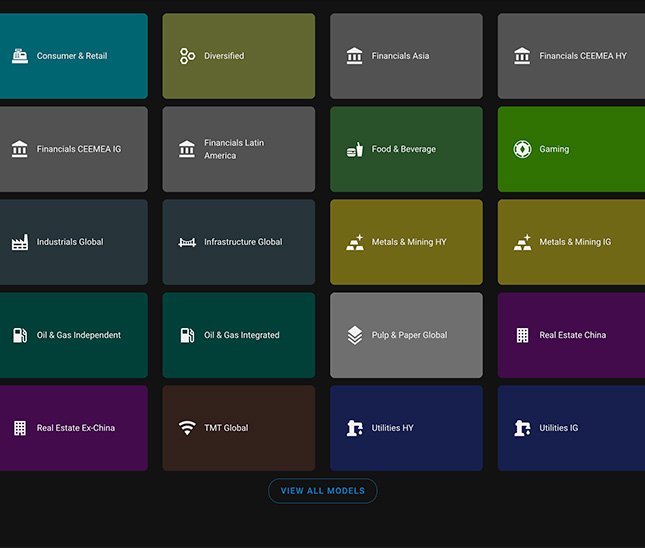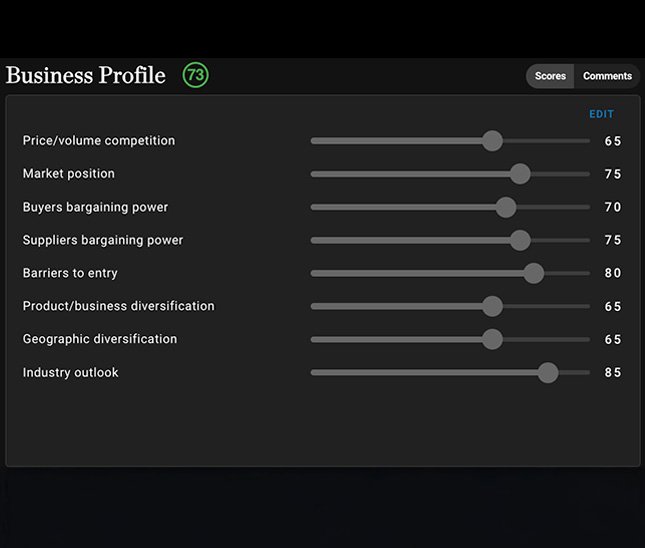Technology-Driven Insights, Sharper Investments

In the complex world of emerging markets (EM) corporate debt, sharper insights are key to identifying opportunities and risks. With more than 700 issuers across nearly 60 countries, effective research demands both depth and precision. William Blair’s proprietary technology, Summit, streamlines this process, turning vast data into structured insights—thereby empowering smarter, faster investment decisions.
Watch the video or read the recap below.
EM corporate debt is a diverse asset class, including more than 700 issues in nearly 60 countries across multiple sectors. Fundamental research is essential to understand the risks and opportunities of this investment universe.
At William Blair, we use Summit, a technological research tool, to help us develop EM corporate credit research in a structured and efficient manner. Summit has been designed by our technology team, working closely with portfolio managers and analysts. This has ensured its functionalities are customized to our investment process.
Summit is a fit-for-purpose, user-friendly tool, which is fully aligned with our investment process and philosophy.
There are several reasons why we believe Summit benefits our process.
Summit allows us to document research in an organized and structured manner. This allows us to analyze a large number of issuers more efficiently and appropriately store knowledge produced in-house.
Data is made available to members of the team anywhere in the world, at any time, which supports communications and informed decision-making.
Furthermore, because it was developed in close partnership with the investment team, Summit is a fit-for-purpose, user-friendly tool, which is fully aligned with our investment process and philosophy.
In the following sections, we are going to demonstrate how Summit helps us, by taking a closer look at the platform’s functionalities..
Sector Overview
To analyze EM corporate credit issuers, we split the investment universe in 20 different sectors. These sectors reflect what is, in our view, the most suitable peer group for each of the issuers we cover.
There’s no one-size-fits-all way to group issuers; some issuers are grouped based solely on their economic activity, while others are also split according to geography or credit-rating bucket.
Fundamental Research
Our fundamental research framework has two pillars: corporate credit research and environmental, social, and governance (ESG) research. Using proprietary models, we seek to analyze key risks through a holistic approach. We score issuers from zero to 100 under each pillar, based on a set of risk factors.
Issuer Deep Dive
The issuer-level analysis starts with a summary of the key elements of our analytical framework: credit risk model, ESG, and relative valuation.
Through the credit-update functionality, analysts are able share their notes on company interactions, such as conferences and earnings calls, making information available to the broader team and easily accessible at any time.
Credit Research Model
We assess corporate credit risk using the credit risk model based on five risk factors: business profile, financial risk, management and strategy, sovereign risk, and debt profile.
We assess an issuer’s strength in each of them based on several subfactors, which when aggregated, result in an issuer’s final score. Analysts can provide additional information supporting the scores using the comments functionality.
Within the business profile section, for example, we look at factors such as competitive position, bargaining power, diversification, and industry outlook.
Under financial risks, we seek to assess the strength of an issuer’s credit metrics and the direction of its credit trajectory, based on our proprietary analysis. In combination with that, we also analyze the issuer’s debt composition and maturity schedule to assess, for example, whether it could be exposed to any refinancing risks in the near term. Usually, a lower concentration of short-term debt maturities is a sign of a healthier credit profile.
Sovereign risk is another important risk factor for EM companies. Sovereign-related factors can impact a company’s credit profile through macroeconomic channels, such as growth, inflation, and exchange rate, as well as through political and regulatory risk.
Additionally, changes to sovereign credit ratings can directly impact the ratings of companies in a country because EM corporate credit ratings are often capped at their respective sovereign’s rating.
Under management strategy, we look at a company’s financial policy and ownership structure, the management team’s track record, and its growth strategy. Despite the subjective nature of these factors, they may be critical to an issuer’s credit trajectory.
ESG
ESG analysis is the second pillar of our fundamental research framework.
We use a proprietary scorecard to analyze ESG risks. We do so by scoring subfactors within each of them, which can be seen on this page.
Final ESG scores are then calculated by rolling up each pillar’s scores according to their weight. The weights of E, S, and G differ by economic sector.
There are some elements of ESG research which may not be captured by the scorecard. We therefore look at them separately. Incident management is based on an issuer’s response track record and whether events or controversies have occurred in the past and with what frequency. Additionally, we seek to take a qualitative, forward-looking view on the expected future progress of the issuer based on their targets and stated ambitions.
Relative Valuation Assessment
The last step in our analytical framework is the relative valuation assessment. Within Summit, we are able to compare an issuer’s bonds valuation to its peers, its country of risk, credit-rating bucket, or its own curve. This allows us to assess whether bonds offer value relative to their credit risk. The combination of fundamental research to relative valuation analysis underpins our investment decisions.
Our Edge
Investing in EM corporate credit comes with challenges and opportunities. At William Blair, we seek to use technology to tackle these challenges by making research more structured and accessible—hopefully enabling us to better seize potential investment opportunities.
Mariana Villalba, CFA, is a portfolio manager and credit analyst on William Blair’s emerging markets debt (EMD) team.
Want more insights on the economy and investment landscape? Subscribe to our blog .
Charts or graphs referenced herein have been obtained from Summit, William Blair’s proprietary investment research platform. Model scores are based on William Blair’s proprietary models. This information is provided for illustrative purposes only, is not intended as investment advice, and is not representative of the past or future performance of any William Blair product or strategy.
The post Technology-Driven Insights, Sharper Investments appeared first on William Blair .




